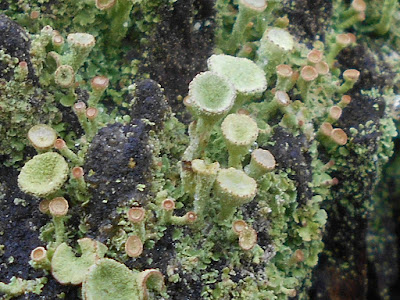Neither a flowering tree or with any obvious cones the yew is nevertheless grouped with the conifers even though its ovules are borne singly and therefore do not form cones. It is not regarded as native to Northamptonshire but everyone is familiar with it through its presence in churchyards. I gather it even has its own local common name - 'Snotball' - apparently for the form of its berry-like fruits (Ref. 2). Despite being an alien in our county we can boast one of Britain's finest specimens. The wonderful tree in Helmdon churchyard, about which I blogged some five years ago, is reputed to be 1700 years old, but it must be said that ancient yews are very difficult to date. (A branch of a yew in Borrowdale was torn off during a storm in 1998; this was shown by dendrochronology to be 1500 years old - but this was just a limb and the tree itself may be much older. (Ref 4))
Can we be sure that Yew is not native in Northamptonshire? Briefly, no, but it seems very unlikely. Druce (Ref. 3) described it as 'a doubtful native of the county'. I suppose it depends how far you go back. After all, Norway Spruce was native to Britain before the last Ice Age wiped it out - but there is no point in pursuing that line of thought. In short, we cannot be certain.
I was reminded of this during a visit to Byfield earlier today. There are yews in the churchyard there but most of them are examples of the upright Irish Yew, Taxus baccata cv. fastigiata.
 |
| A fastigiate yew in Byfield Churchyard. 30 January, 2018 |
Pleasingly these Byfield yews do bear fruit and the numerous young yew trees in Byfield Pocket Park are quite likely to be their bird-sown progeny.
References
1. Quoted in Tudge, C. (2005) The Secret Life of Trees Penguin Books
2. Gent, G and Wilson, R (2012) The Flora of Northamptonshire and the Soke of Peterborough. Botanical Society of the British Isles
3. Druce, G.C (1930) The Flora of Northamptonshire Buncle & Co
4. Pankhurst, M., A'Hara, S. and Cottrell, J. (2015) The Fraternal Four British Wildlife, Vol 26 p. 178
















































